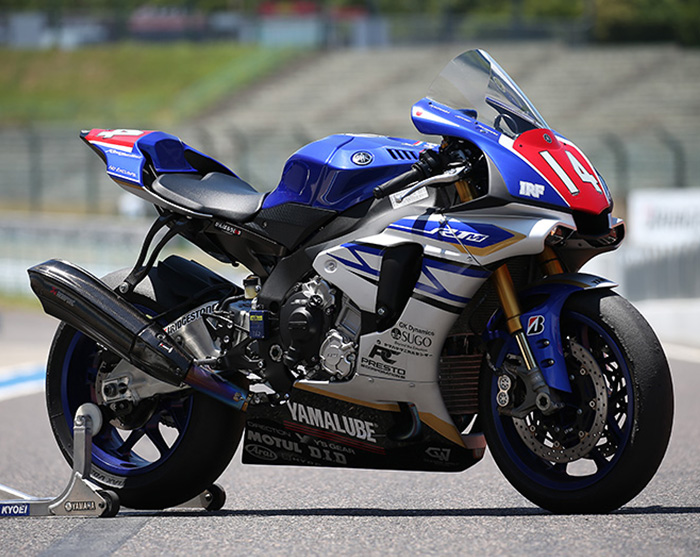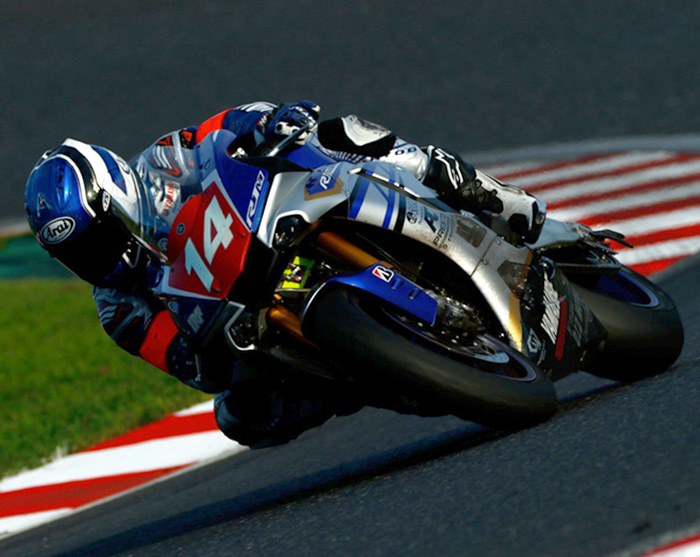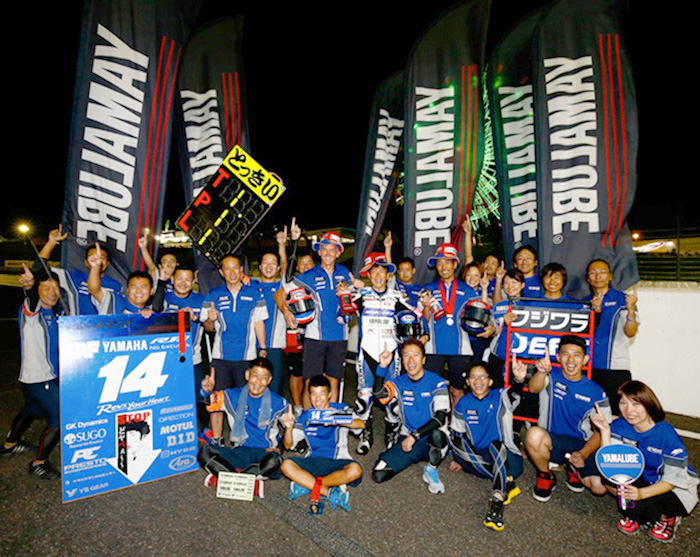6-axis IMU-based Electronic Control System
Introducing the stories behind Yamaha Motor's technologies.

Before the birth of the 2015 YZF-R1/YZF-R1M models, the electronic control systems on production motorcycles were separate, with one for the engine and one for the chassis. It was with the all-new 2015 R1 models (#1) that these were unified into one system. What makes this integration possible is an electronic control system featuring a 6-axis Inertial Measurement Unit (IMU) (#2). It measures acceleration in the forward-backward, up-down and right-left directions and the angular velocity in the machine’s pitch, roll and yaw directions, then calculates and relays that information in real-time to the bike’s systems to control the engine and the behavior of the chassis to assist the rider.
The YZF-R1 is a production model, but its focus is on competing in and winning races. The development theme was to build a bike that brings out the strengths of the rider to the fullest with performance that ensures they can run at the front in a race. Some might fear that having a racing-oriented high-power engine means excessively strong responses to rider input. However, Yamaha made sure that the R1 is equipped with a control system that inhibits excessive machine motion as much as possible so that the rider doesn’t need to be overly cautious, can ride the bike with confidence and can focus more fully on outmaneuvering and outracing rivals on the track.
For example, if 50% of the rider’s attention is normally on how the machine is behaving, 30% on the track conditions and the remaining 20% on a rival’s actions, the aim of the development was to increase that final 20% share so the rider can concentrate on racing itself. In track testing the bike, the primary focus wasn’t on raw laptimes; development based on times would eventually end up as a “machine vs. machine” competition rather than “rider vs. rider,” meaning the important aspect of racing being between people would not come into play.
With the YZF-R1’s new control system, the signals from each sensor are processed by a 32-bit CPU capable of floating-point calculations at a high speed of 8 ms (125 calculations per second). Furthermore, the system achieves high-precision detection of machine lean angle and rear-wheel slide through hybrid estimation sensor technology based on a Yamaha-exclusive motorcycle motion model. These capabilities make it possible to integrate information about machine lean angle into the traction control system (#3) and information about rear-wheel slide into engine output control to help achieve waste-free acceleration and other benefits across a wide range of other situations.
The R1 also mounts a Unified Brake System that utilizes the machine attitude information provided by the IMU to estimate lean angle and use that as a parameter for making corrective adjustments to braking performance. The YZF-R1M boasts an electronically controlled suspension system that makes adjustments to optimize the damping force of the front fork and rear shock based on information about road conditions from the IMU and various sensors. The end result is an electronic control system that allows the rider to fully concentrate on the act of riding, not only on the racetrack but also on public roads and mountain twisties.
A Debut Win at the Suzuka 8 Hours
As a way to put the finishing touches on the new YZF-R1/R1M’s (#4) development process, the bike’s engineers entered it in the Suzuka 8 Hours Endurance Road Race* held in July 2015. They proved the model’s performance potential by winning the Superstock (SST) class race with a machine only modified with parts that can be purchased by owners.
In Japan, the Suzuka 8 Hours is the biggest motorcycle road racing event of the year, and it has come to be known as Japan’s “Midsummer Festival” of motorcycle racing. The race is contested by teams of either two or three riders taking turns riding the same machine over roughly one-hour stints for the race’s 8-hour duration, circling the approximately 5.8 km track in a race of speed and endurance. For the 2015 race, 11 of the teams entered used the newly released YZF-R1/R1M models. Under the “team R1 & YAMALUBE” name (#5), the squad made up of the model’s development team was managed by the bike’s project leader, Hideki Fujiwara. The team’s three riders were Yamaha Motor employees Makoto Tokinaga and Norihiko Fujiwara, who were involved in the new R1’s development, and Yamaha Motor Europe test rider Jeffry De Vries. In the race, they finished 21st overall, completing 194 laps in 8 hours 49 sec. to win the SST class in their debut race with the R1.
*The 38th “Coca-Cola Zero” Suzuka 8 Hours Endurance Road Race was a round of the 2015 FIM Endurance World Championship.





